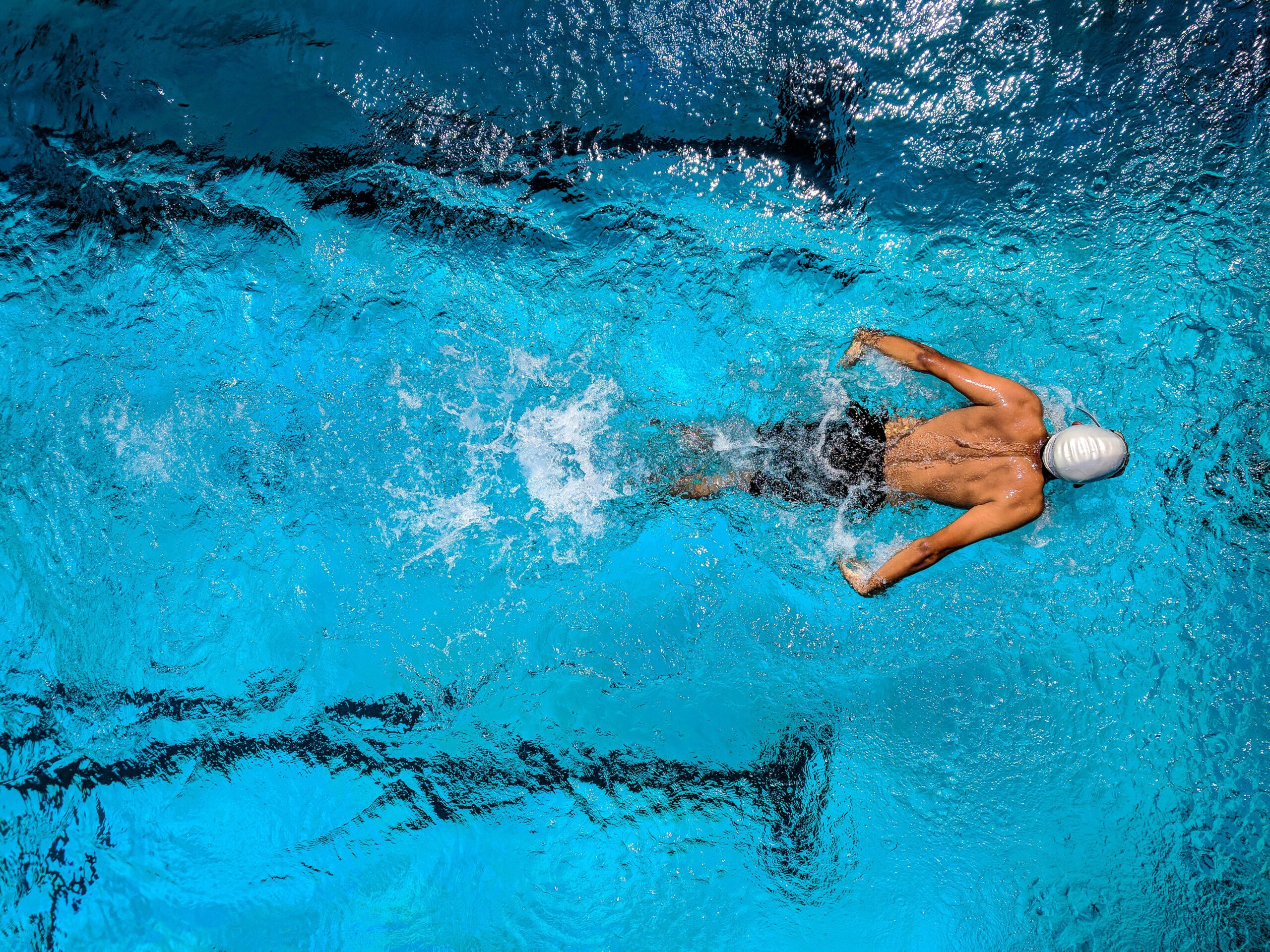Swimming Is A Great Way To Work The Whole Body

Swimming is a great way to work the whole body and the cardiovascular system. An hour of swimming burns almost as many calories as running, without the impact on your bones and joints. It is especially useful for exercising physically handicapped people in physical therapy.
Benefits
Swimming makes your heart and lungs strong. Compared to inactive people, swimmers have about half the risk of death. Some studies show that swimming may help lower blood pressure and control blood sugar.
Swimming may be a safe exercise option for people with arthritis, injury, disability, or other problems that make high-impact exercise difficult. Breathing exercises, such as breath holding, can help you expand your lung capacity and gain control over your breathing. So, it seems to be a great activity for people with asthma.
Water provides slight resistance. People with multiple sclerosis (MS) can also benefit from swimming because the water also provides support. It can have an impact on better sleep at night. Swimming is a potentially powerful way to quickly relieve stress. Pregnant women who swam during early to mid-pregnancy had a lower risk of preterm birth and birth defects.
Variations
There are different swimming variations you can use to add variety to your swim workout:
• Breaststroke – Breaststroke is believed to be the oldest stroke. Breaststroke consists of a wide stroke of the arms combined with a symmetrical action of the legs and simulating the movement of a frog swimming, hence the common term frog stroke.
• Backstroke- In this stroke, the position of the swimmer’s body is supine, and the body is kept as flat and streamlined as possible. The arms alternately reach overhead and enter the water directly in line with the shoulders, palm out with the little finger entering the water first.
• Side stroke-The body stays on the side, and the arms move alternately. The leg movement used in a side stroke is called a scissor kick.
• Butterfly – used only in competition. In the butterfly, the arms are brought forward above the water.
• Crawl – the stroke used in competitive freestyle swimming has become the fastest of all strokes. The body lies prone, flat on the surface of the water, with the legs held slightly underwater. The arms move alternately, timed so that one starts pulling just before the other finishes pulling, making the drive continuous.
Each one focuses on different muscle groups, and the water provides gentle resistance. No matter what stroke you swim, you use most of your muscle groups to move your body through the water.
Lose Weight By Swimming
Swimming is not only a great way to cool off on a hot day, but it’s also one of the best ways to lose weight. You can lose the same amount of weight by swimming as you can by running. Wear a waterproof fitness tracker to track your heart rate while swimming. Your target heart rate during moderate-intensity exercise should be about 50 to 70 percent of your maximum heart rate.
You can calculate your maximum heart rate by subtracting your age from 220. The frequency of swimming for weight loss is four to five days a week for the best results. If you’re swimming to lose weight and tone up, do some bicep curls with water weights between laps. Water creates resistance, which can help build strength and endurance. But you don’t always have to swim to achieve a goal. As soon as you can jump in the water and enjoy.
• freestyle.

